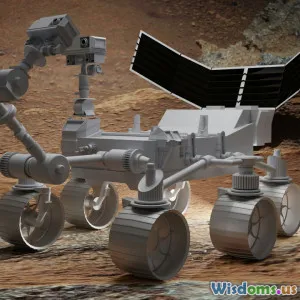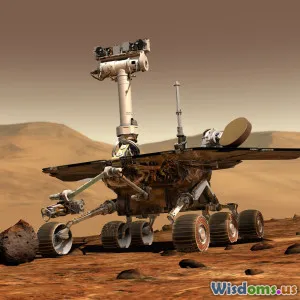
Mars Missions: A New Era of Exploration
6 min read Explore the exciting new era of Mars missions and what they mean for our understanding of the Red Planet. (0 Reviews)
Mars Missions: A New Era of Exploration
The exploration of Mars has captivated humanity for decades. As the fourth planet from the Sun, it holds secrets about our solar system's history, the potential for life beyond Earth, and the future of human habitation in space. Recent advancements in technology and international collaboration have ushered in a new era of Mars missions that promise to deepen our understanding of the Red Planet.
Historical Context of Mars Exploration
Mars exploration began in the 1960s with a series of flyby missions, leading to the first successful landing by NASA's Viking 1 in 1976. Over the years, various orbiters, landers, and rovers have provided invaluable data about the Martian atmosphere, geology, and potential for past life. Notable missions include NASA's Spirit and Opportunity rovers, which uncovered evidence of water in the planet's past, and the Curiosity rover, which continues to analyze rock samples and search for organic compounds.
The Current Landscape of Mars Missions
As we move further into the 21st century, the landscape of Mars exploration is evolving rapidly. Not only are NASA and other space agencies continuing their missions, but private companies are also entering the fray. Here are some key players in the current Mars exploration efforts:
1. NASA's Perseverance Rover
Launched in July 2020, the Perseverance rover represents a significant leap in Mars exploration technology. Equipped with advanced scientific instruments, it is tasked with searching for signs of ancient life, collecting soil samples for future return missions, and testing technologies for future human exploration. Its companion, the Ingenuity helicopter, has successfully demonstrated powered flight on another planet, paving the way for aerial exploration.
2. China's Tianwen-1 Mission
China's Tianwen-1 mission, which successfully entered Martian orbit in February 2021, marked a significant achievement in the realm of space exploration. The mission includes an orbiter, lander, and rover, named Zhurong, which has been exploring the Martian surface and sending back valuable data. This mission highlights the growing international interest in Mars and the potential for collaborative exploration.
3. United Arab Emirates' Hope Probe
The UAE's Hope Probe, launched in July 2020, focuses on studying Mars' atmosphere and climate. By providing a comprehensive view of the Martian atmosphere, it complements the efforts of other missions and enhances our understanding of the planet's weather patterns and seasonal changes.
The Role of Technology in Mars Missions
Technological advancements are crucial to the success of Mars missions. Innovations such as autonomous navigation, advanced robotics, and sophisticated scientific instruments enable missions to gather more data than ever before. Additionally, the development of in-situ resource utilization (ISRU) technologies is essential for future human missions. These technologies aim to use Martian resources, such as water and carbon dioxide, to produce fuel and oxygen, making long-term habitation feasible.
The Future of Mars Exploration
Looking ahead, several ambitious missions are planned that could revolutionize our understanding of Mars:
1. Sample Return Missions
NASA and ESA are collaborating on a sample return mission, which aims to bring Martian soil samples back to Earth for detailed analysis. This mission represents a critical step in determining whether life ever existed on Mars and will provide insights into the planet's geological history.
2. Human Exploration
NASA's Artemis program aims to return humans to the Moon as a stepping stone for future missions to Mars. Plans for human exploration of Mars are being developed, with a goal of sending astronauts to the Red Planet in the 2030s. This mission will require overcoming significant challenges, including life support systems, radiation exposure, and sustainable habitats.
3. International Collaboration
As more countries and private companies enter the field of Mars exploration, international collaboration will become increasingly important. Joint missions and shared resources can enhance scientific discoveries and reduce costs, ultimately making Mars exploration more accessible.
Conclusion
The new era of Mars missions is marked by unprecedented technological advancements, international collaboration, and ambitious goals for human exploration. As we continue to unravel the mysteries of the Red Planet, we stand on the brink of discoveries that could reshape our understanding of life in the universe and humanity's future in space. Mars is no longer just a point of interest; it is a destination that may hold the keys to our continued exploration beyond Earth.
Rate the Post
User Reviews
Popular Posts





















